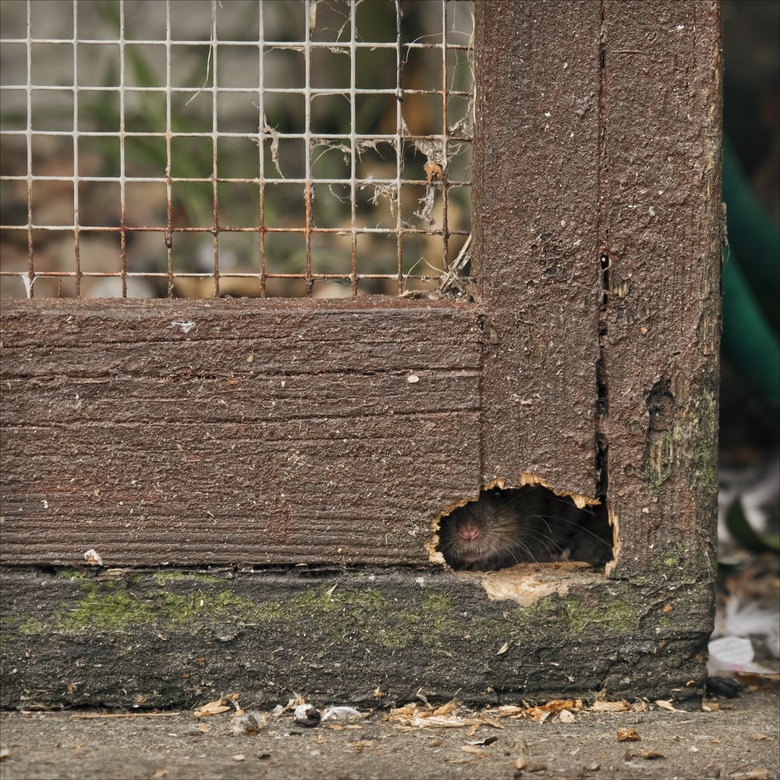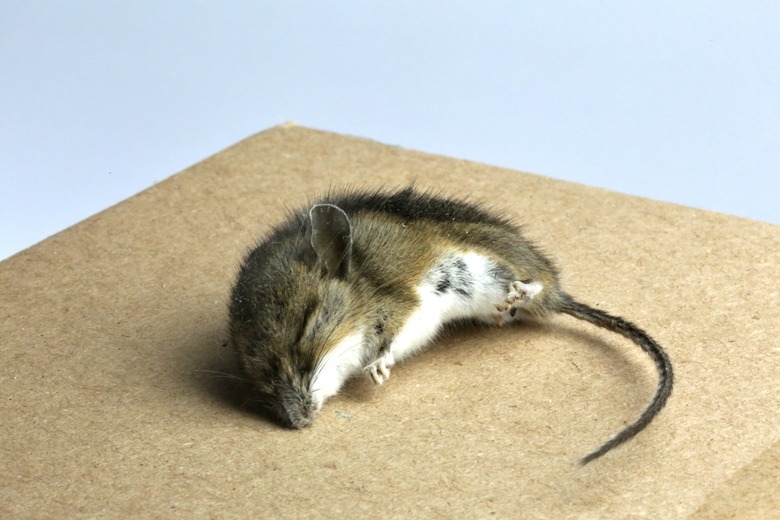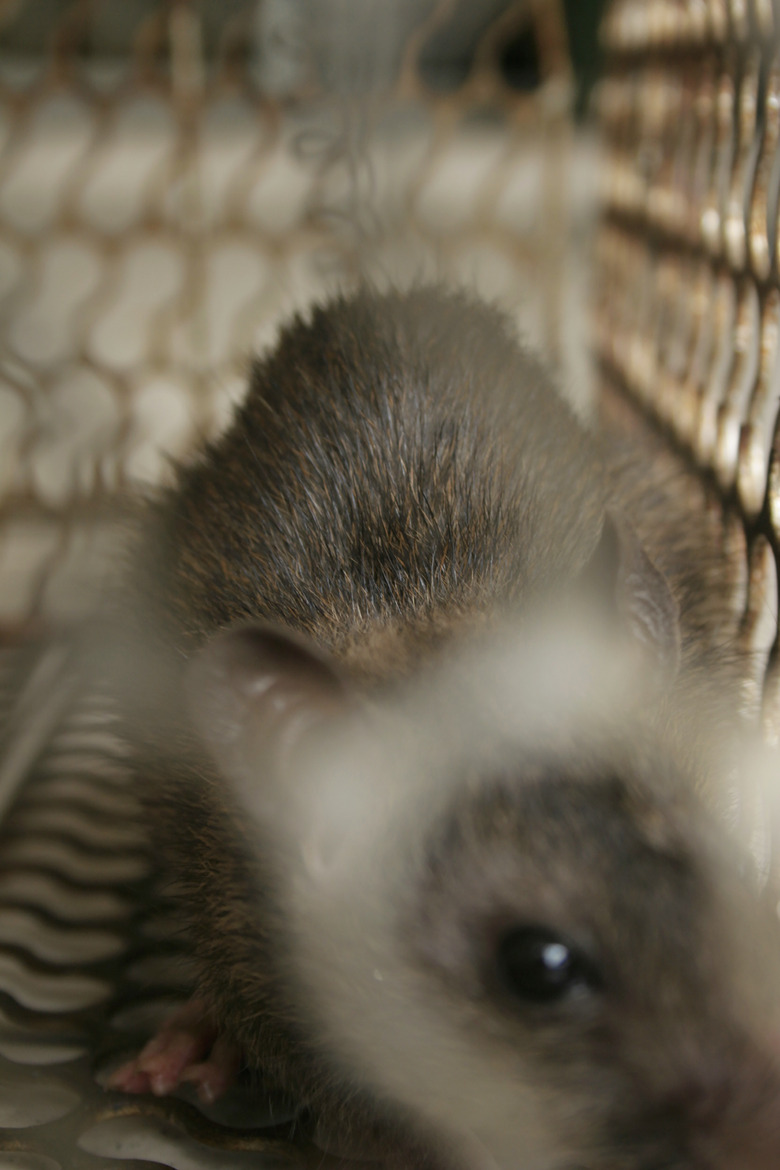How Do I Get Rid Of Rats?
Few pests create such feelings of aversion and disgust as common rats infiltrating a home or yard. Perhaps this dates back to the reputation of rats (Murinae Rattus) as the carrier of bubonic plague and other diseases—although actually, it was the fleas on the rats that actually carried plague. Whatever the reason, finding a rat or the signs of rats in your home can be a shock and embarrassment since an infestation by this common rodent implies unsanitary conditions and lack of hygiene in the minds of many people. In reality, rats are a habitual problem in some climates. There is no reason to feel embarrassed if you find yourself faced with these members of the Muridae family of rodents—a group that includes both mice domestic creatures such as gerbils. Rats are ingeniously adaptable rodents, and no home is immune from rats if the conditions are right.
Fortunately, there are effective and easy ways to deal with rats. Keeping a cat is the classic antidote for rats, and a house cat is indeed often effective. The right cat can do a great job of eliminating rats and mice and preventing future infestations. However, if you don't want to take on the responsibility of house pets, there are other options. If you look online, you'll find a number of natural deterrents, including a variety of spices, ammonia and even human hair. You might get some temporary relief by using one or more of these folk remedies, but if the rats are hungry and there's food around, they'll probably learn to ignore home-spun repellents. The only really effective way to control rats is to block their access to food and trap or poison the ones that continue to hang around. If you are sensitive about such things, you don't necessarily have to kill the little critters. You can trap them in live traps, but if you do, check the traps regularly and make sure you have a plan for relocating them.
What's So Bad about Rats?
What's So Bad about Rats?
If you've seen images of a rat, or you've seen one in a cage, you may be wondering what all the fuss is about. Up close, a rat looks innocent and even a little cuddly, albeit perpetually wary and unpredictable. Rats are busy creatures, and that's part of the problem. Where there is wood or plastic, they will gnaw, and they can do a lot of damage to the electric system in your home or car.
Rats aren't the most sanitary creatures either. They leave droppings pretty much anywhere they roam, and the droppings may be toxic. Rats are responsible for the spread of a variety of diseases, including Hantavirus Pulmonary Syndrome, Leptospirosis and Salmonellosis. If you happen to get bitten, you can contract rat-bite fever, which can be fatal in its most serious form. Finally, let's not forget that rats did indeed harbor the fleas that spread bubonic plague, although modern antibiotics have largely removed the terror associated with plague.
The First Steps in Rat Control
The First Steps in Rat Control
If you have a rat infestation, it's because three conditions have been fulfilled. First, the rats have found access to your home. Second, once inside your home, they have found sources of food and water. Finally, they also have found shelter and places to nest. All three conditions are necessary for a true rat infestation, so eliminating rats involves removing all three conditions, and getting rid of any rats that have already found entry into your home.
The first step requires a thorough cleaning of your kitchen and pantry. Store all food items safely in the refrigerator or in closed containers. Wash the floor and the counters and use a vacuum to remove crumbs from crevices and tight areas, such as under the cabinet toe kicks. Look for wall cavities or corners where loose materials are offering rats a place to nest and clean out any existing nests or loose debris you find. The final step is a little more difficult. It requires a thorough inspection of your house, both inside and outside. Look for cracks in the foundation, holes in the trim and gaps in the baseboards, and seal them securely.
Deterrents Can Help, but You'll Still Need Traps or Poison
Rats might still be able to get into your house after you've sealed it, although it may take them some time to gnaw new passageways. To prevent this, consider deploying spices, such as cayenne, chili, peppermint or garlic—all condiments that rats hate. Another folk remedy is to deploy bowls of ammonia, but keep in mind that ammonia is a component of rat urine, so it may not work for long, if at all. Another option is to buy a commercial rat repellent, which is usually a combination of rat-deterring spices and essential oils.
Deterrents may have a temporary effectiveness, but there's another problem. When you seal your house, a number of rats will probably still be inside, and they will continue to search for food until you remove them—either through trapping or poisoning. One of the problems with poisons is that they take time to work, so the rats may die in the walls or some other inaccessible place. And rat poison is both highly toxic, as well as tasty, to dogs and other pets. For this reason, you may prefer to use traps.
Poisons Must Be in Sealed Bait Stations
The Environmental Protection Agency has approved three types of anticoagulant rat poisons. They work by interfering with blood clotting, causing rats to bleed to death. You obviously don't want your pets or children sampling these. so according to EPA regulations, they must come in sealed bait stations that only the rats can enter. Some other poisons registered with the EPA work in different ways. One product swells inside the digestive system and causes death by asphyxiation or starvation. This too must be in a sealed bait station. Never scatter rat poison indiscriminately, even if you don't have pets or children. Neighboring animals may find it.
Set the bait stations in places where you have noticed rat activity or where you suspect rats are present. Follow the instructions carefully, changing the bait station as directed.
Snap Traps Versus Live Traps
If using poison is not to your liking, traps are the logical alternative. You have a choice between traps that kill rats and those that live-trap them.
Kill traps generally us a snap design. The design of snap traps has evolved over the years, and modern versions are easier and safer to use than the traditional wire and wood ones. The final result is the same for the rat, though—both old and new snap traps kill the rodents. If you have ethical problems with this, you may prefer to use a live trap to give the creatures a fighting chance at starting a new life far from your home. Whatever trap style you use, you'll need bait. Nothing works better than peanut butter, although if you're a traditionalist, you can also use cheese.
A typical live trap is basically a cage with a door that snaps shut when the rodent enters to take the bait. It's a humanitarian alternative to a snap trap only if you check it regularly and don't allow the rodent to die of thirst and starvation. You also need a good place to relocate the rat. An unpopulated, wooded area a mile or more from your house is ideal. It is bad etiquette to simply release the rat on a road in the neighborhood where it's likely to find shelter in one of your neighbor's houses.
Still Have Rats?
Still Have Rats?
Once you've sealed your house and removed attractants, your rat problem should subside after you've completed a poisoning and trapping regimen. If it doesn't, go back to the first two steps and try again. You might want to incorporate some other repellent methods, such as ultrasound emitters. If you don't have any success, it may be time to rely on the experience and know-how of a professional pest exterminator.




